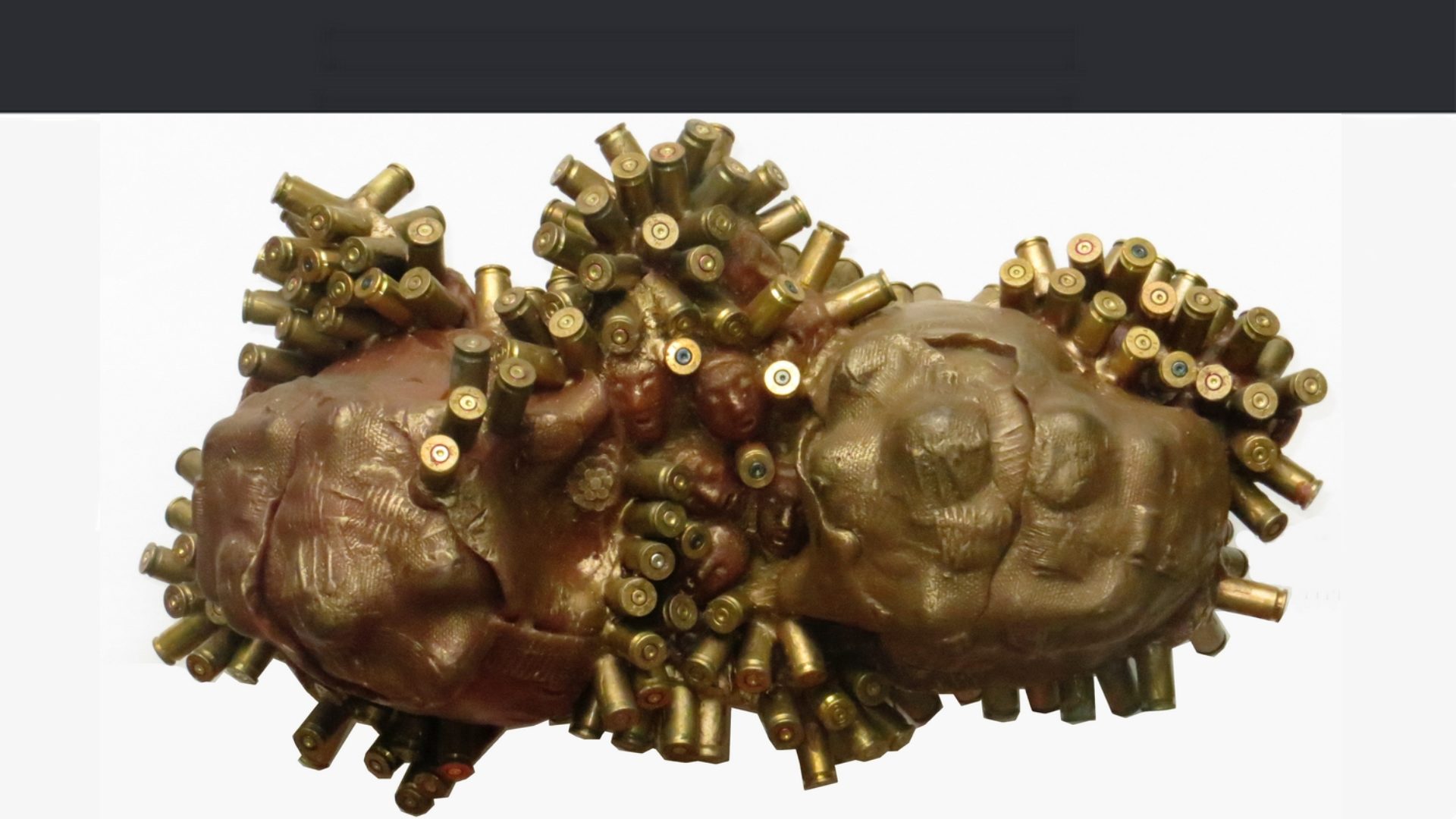Coraly Aliboni, Chief Curator of the Museum Beaux-Arts de Charleroi :
« For the past 33 years now, this man with a predestined physique has been engaged in a paradoxical confrontation involving love, something close to tenderness and strength.
He knows he faces a difficult task: extracting the traces of humanity from the material like an extension of himself, like an extension of us…
Fascinated from the first by mass in fusion, shapeless magma in the making, and the raw block whose weaknesses he is familiar with, the sculptor can perceive the form within: ancestral, eternal. He can already make out the contours, the crevices; his fingers already caress the substances in their refined interplay.
Above all, he intermingles the body, this physical membrane rich in meaning, although it is unclear whether it inhabits the medium or whether it simply imprints its image on it.
This tense body is also sometimes divided up. It fills up the space, in three dimensions: arms, hands with fingers spread, legs, feet, the essence of a body, a being that caresses, calls, tells, walks, travels. The essence of a being in communication.
Writing also has pride of place in the sculpted work devoted to exchange and storytelling.
Incomprehensible stories of lines and dots; an enigmatic and unfathomable juxtaposition of mysterious signs.
The scarified material comes to life and speaks to us: faint, delicate murmurs, nevertheless filled with their almost bewitching mystery.
The trace, imprint, remnant, scar, is what gives Martin’s approach all its sensuality.
The eye goes beyond this encounter and guesses, recognises. A familiar local reference here, a hand, a face there, that of the artist. Sometimes, the eye also loses its way, hesitates.
A natural attempt to decipher a message, to understand a code: to delight in the reassuring recurrence of a sign that suddenly disappears; to come up against the unexpected appearance of a system whose purpose remains inaccessible.
The tamed material quivers under the thrust of a vital fluid and sinks under the effect of external pressure. Bronze and stone take shape and come to life.
The fruit of a perfectly mastered technique, breathing – deep breathing – is the result of a man who loves the raw material, who appreciates its wealth; the ideal medium for extreme sensitivity and a burning need to express oneself.
As for the light, it plays in the nooks and crannies, creeps in, caresses, bounces back. Matt or polished, the sculptor knows how the surface reacts. He alternates the textures and finishes.
Under the influence of contrasts, the sculpture adapts, leading to an infinite and perpetual interpretation, a never-ending and profoundly human story of a work over time…
Career
In 1966-1967, Martin Ankh took his revenge on a difficult childhood and won a whole range of prizes:
The Grand Prix d’Excellence de la Ville de Bruxelles, where he was awarded the highest distinction; first prize in Brussels’ « L’Art à Forest » national open-air sculpture competition; Grand Prix Triennal de la Ville de Bruxelles.
By the end of the 1960s, the sculptor had established a name for himself and had earned recognition.
In 1969, he began to work simultaneously in bronze, stainless steel, stone and black marble, his favourite materials.
These beginnings lay at the basis of an approach which continues to unhesitatingly combine metals and minerals today.
In the 1970s, Martin Ankh began to participate in major exhibitions, where he also distinguished himself: Second International Biennale in Ravenna in 1974, where he was awarded the silver medal; exhibition of monumental sculptures in Louvain.
In 1980, in a studio established in the former boilerworks of the Providence factories in Marchienne-au-Pont (Cockerill-Sambre Group in 1981), he began to create pieces which he presented at a series of major events. Martin Ankh’s works joined numerous collections, especially at the Museum of Fine Arts in Charleroi in 1988 with « L’Aube des Signes ».
He subsequently exhibited his work at La Fiac in Paris in 1983, at the first International Biennale of Young Sculptors in Athens in 1984 and at the Second International Biennale of Young Sculptors in Skironio in 1985.
In 1998, a major retrospective of his work was held in Taiwan at the Museum of Fine Arts of Kaohsiung; he also took part in Taipei’s international fair.
In 2001, the retrospective “Trente années de sculpture” was held in the Palace of Fine Arts in Charleroi.
An exhibition to be held in New York is currently under preparation.
Martin Ankh is also present in various towns.
Monumental works can be seen in Brussels at the “Botanique” metro station, while Charleroi is home to the “Colonne Martin Ankh” (created in the installations of the Museum of Industry) and “Passation”, on the Palace of Fine Arts roundabout. »

